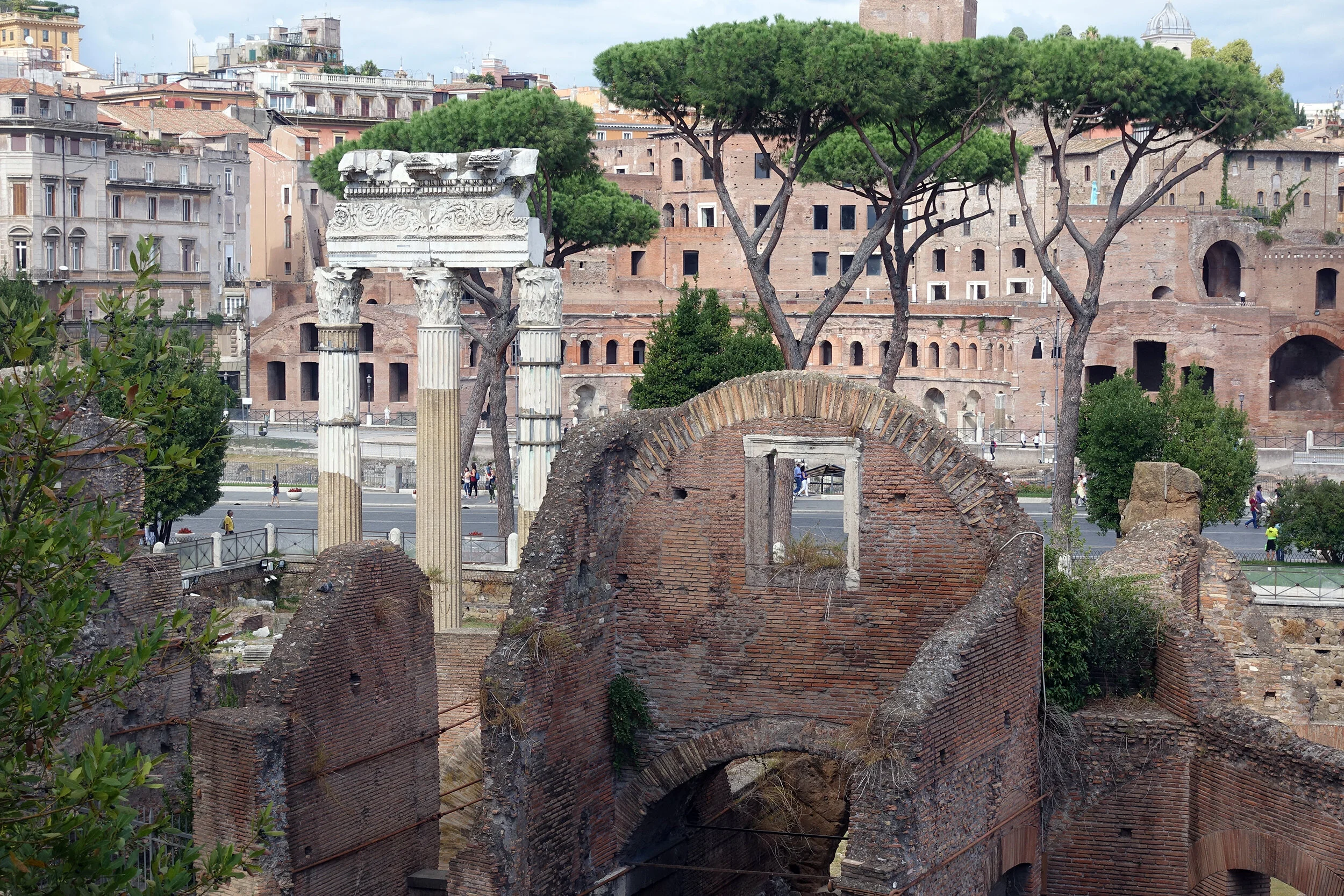
Page 5 of 10
Rome, Italy
Mailing letters and taking pictures, we'll put each other's in a drawer for a while
It's hard not to like Rome. Sure, Rome may have had more enemies than friends during its bad ass Empire days, but today it is a wondrous balance of almost impossibly ancient buildings and an actual, functioning city. The layers of history are everywhere and it’s the reason that even in a (relatively) short trip to Italy that a (relatively) short visit to Rome was so appealing.
I have been south of Rome before and one of the most amazing things about the train trip down to Naples is the scenery as you leave Rome. For miles and miles the train parallels ancient aqueducts that are hard to miss and even harder not to love. The aqueducts are not just something that you can only see from a train window, there is also a park full of aqueducts in Rome within striking distance of the city center and the Metro A line. Once there you'll find two aqueducts: once is from the 1500s and kind of low, but the other is from the 50s (as in the 0050s) and far more impressive. Somehow for (almost) 2000 years, the aqueduct built by slaves and opened by Emperor (Claw Claw) Claudius still stands, or more accurately, large pieces of it still stand. Sections stand alone in the fields, allowing your imagination to draw the straight lines between sections, sections that have stood strong as an empire fell around it and as the world changed beyond recognition.
One of the other big draws for my visit to Rome was this, the Via Appia Antica, the Appian Way. I had always wanted to visit it but never had the timing quite right. On six days a week, the very straight road still has cars, and since sidewalks weren't a thing in 300 BCE when it opened, it's kind of insane to go for a walk there. Luckily on Sundays, the Romans shut it down to traffic and it becomes a place that starts to feel like it did 2000 years ago.
The road is more than a straight line, although it most certainly is one. In Ancient Rome, burials were prohibited inside the city, so wealthy, important Romans built impressive gravestones (like this one) along side the road. Even today the ruins of tombs (like this one) line the road, and surprisingly some (like this one) are still reasonably intact. Historically the road also used to host other kinds of death as well. The Spartacus slave revolt ended badly right here when a couple of thousand slaves were all crucified right along the side of this very road, creating an almost unimaginable horror for miles and miles and miles.
Aqueduct Park and the Appian Way were most definitely draws for me to return to Rome, but the main push was actually new construction. Just over a year ago, I had seen a lecture given by Odile Decq at the Architectural Record Innovation Conference. Odile Decq is an absolutely charming French woman with crazy hair who looks a lot like a pale, fictional stock character from just about any Tim Burton film. In the lecture she spoke of projects including one in Rome called MACRO, a contemporary art museum with some interesting interventions. The thing that really grabbed my attention were the bathrooms. They featured sinks that glowed white but then changed color to red when in use. So more than anything, I now wanted to get to Rome to get to MACRO just so I could use the bathroom. This is how my mind works.
The actual experience at MACRO was a bit disappointing. The museum was in the middle of a gallery installation (bad news) but they let me in for free to look around (good news) but then the main, large bathrooms were also in the closed area (horrible, horrible news). Luckily the smaller bathrooms near the cafe were open, and I went in and washed my hands and everything went as planned, with the red switchover on a slight delay but still just as dramatic as Odile Decq charmingly described. As for the rest of the building, it was memorable but hard to really judge without being fully opened. Still areas like the all red lounge above the all red theatre were open (see below), so at least I felt as if my pilgrimage had some value. And I'm already looking forward to returning at some point in the far off future to see the galleries and experience the building as fully intended. And to use the bathrooms.
My trip to Rome was more than broken aqueducts, death lined roads and museum bathrooms. Luckily I had time to hit some classic sights, some that almost need no explanation, although that's not going to stop me from giving one. If you walk west from Roma Termini, past the Pantheon but before the bridge to Castel San Angelo, you'll end up here, regardless of whether you wanted to come here or not. Welcome to Piazza Navona.
I'm going to leave you with one last picture of Rome, at least for now. These are the Cordonata Steps that lead up to Michelangelo's Piazza del Campidoglio on Capitoline Hill, on another perfect, sunny day in Rome

